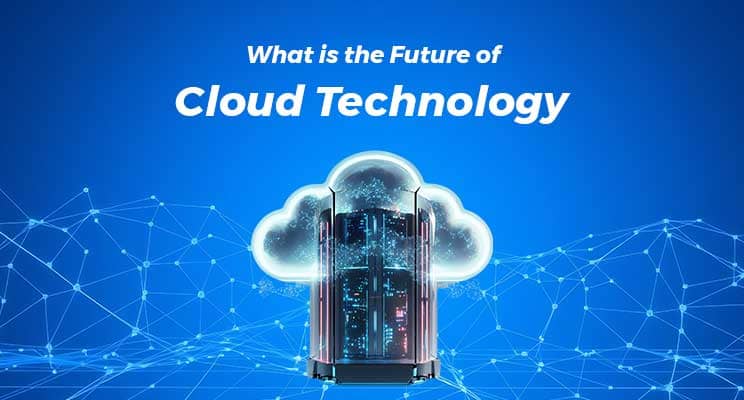In today’s digital-first era, cloud computing has become the backbone of businesses, governments, and individuals alike. From streaming services and online shopping to data-driven enterprises, cloud platforms are enabling unprecedented levels of accessibility, scalability, and innovation. As we move into 2025 and beyond, cloud computing is no longer just about storing files online—it is about creating intelligent, secure, and interconnected digital ecosystems.
This article explores the future of cloud computing and data storage, its benefits, new trends, potential challenges, and the transformative role it plays in technology and IT.
What is Cloud Computing?
Cloud computing refers to delivering computing services—such as servers, storage, databases, networking, and software—over the internet (“the cloud”). Instead of owning and maintaining physical hardware, users can rent access to computing resources on-demand.
- Public Cloud: Services offered over the internet by providers like AWS, Microsoft Azure, or Google Cloud.
- Private Cloud: Exclusive cloud environment for one organization.
- Hybrid Cloud: Combination of public and private clouds for maximum flexibility.
The evolution of cloud computing is moving toward automation, AI integration, and edge connectivity, redefining how data is processed and stored.
Why Cloud Computing Matters
1. Scalability and Flexibility
Businesses can scale resources up or down based on demand without investing in expensive infrastructure.
- Example: E-commerce platforms scaling servers during holiday sales.
2. Cost Efficiency
Pay-as-you-go models allow companies to save money by paying only for the resources they use.
- Impact: Small startups can compete with large enterprises thanks to affordable access to advanced computing power.
3. Accessibility and Collaboration
Cloud services enable remote teams to work together in real time, improving productivity.
- Example: Google Workspace or Microsoft 365 allowing seamless global collaboration.
The Future of Cloud Data Storage
1. Multi-Cloud and Hybrid Cloud Adoption
Companies increasingly use multiple providers (AWS, Azure, Google Cloud) to reduce risks and improve resilience.
- Impact: Businesses avoid vendor lock-in and maximize performance.
2. Edge Computing Integration
Instead of relying solely on centralized servers, edge computing processes data closer to where it’s generated—reducing latency and improving efficiency.
- Example: Autonomous vehicles requiring real-time decision-making powered by edge-cloud collaboration.
3. AI and Automation in Cloud Services
Artificial intelligence is revolutionizing cloud systems by enabling predictive analytics, automated resource management, and enhanced cybersecurity.
- Impact: Intelligent clouds optimize workloads, reduce costs, and detect threats before they occur.
4. Quantum Computing and the Cloud
Cloud providers are experimenting with quantum computing as a service (QCaaS), giving businesses access to next-generation computing power.
- Future Impact: Complex problems in medicine, finance, and climate modeling may be solved faster.
5. Data Storage Innovations
Traditional hard drives are being replaced with advanced storage solutions such as:
- SSD-based cloud storage for faster performance.
- Object storage systems for managing large unstructured datasets.
- DNA and holographic storage research for ultra-dense, long-term storage.
Cloud Computing in Different Industries
1. Healthcare
Hospitals store patient records securely on the cloud and use AI for diagnosis.
- Example: Real-time collaboration between doctors across different locations.
2. Education
Cloud-based learning platforms provide students with remote access to resources and digital classrooms.
3. Finance
Banks use cloud analytics for fraud detection, mobile banking, and real-time financial forecasting.
4. Entertainment
Streaming platforms like Netflix and Spotify rely on cloud infrastructure to deliver content globally.
5. Government and Public Services
Governments deploy cloud systems to ensure data transparency, public services efficiency, and digital security.
Challenges of Cloud Computing
1. Security and Privacy Risks
With growing cyber threats, protecting sensitive data stored in the cloud is a top concern.
- Solution: Zero-trust models, advanced encryption, and AI-powered security.
2. Compliance and Regulations
Companies must comply with laws like GDPR and HIPAA when storing user data in the cloud.
3. Rising Costs of Cloud Dependency
While affordable initially, heavy reliance on cloud resources can lead to unexpected costs.
4. Data Sovereignty
Countries may require data to be stored within their borders, complicating global operations.
The Future Landscape of Cloud Computing
- Serverless Computing – Developers will run applications without worrying about managing infrastructure.
- Green Cloud – Energy-efficient data centers powered by renewable energy will dominate.
- Cloud + 5G – Ultra-fast networks will accelerate adoption of cloud-driven IoT and immersive applications.
